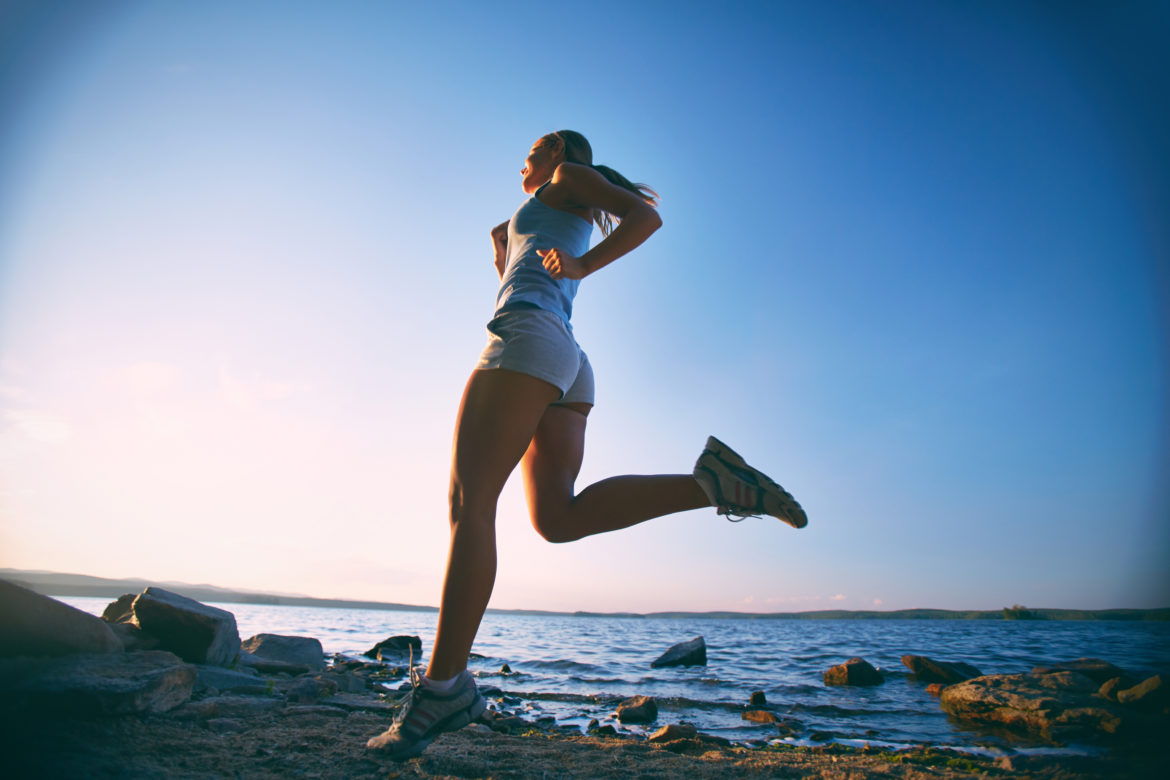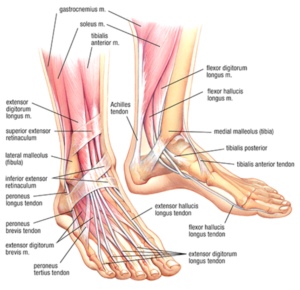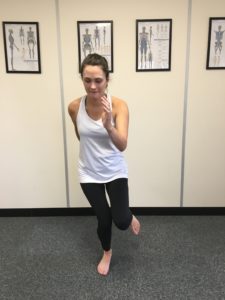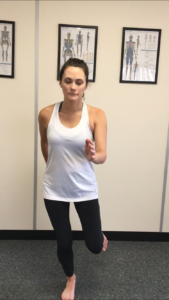
Is your shoulder screwing your knee alignment?!
If the knee is the victim – what’s the cause?
My last blog implied that mechanical knee problems were secondary to something else in the body NOT working properly. Well, after publishing it, the very next day, I had the lovely Bibi come into the clinic for a ‘return to running’ screening assessment following the birth of her son, Stanley, 8 weeks ago.
Bibi is a runner of 4.5 years and clearly very passionate about it. In fact, Bibi and her mum, Jayne, are the co-authors of a great award-winning running blog – Veggie Runners
As we discussed Bibi’s background, her running goals and overall clean bill of health, I was starting to question whether there was anything I could contribute to her return to running. The only slight symptom she mentioned was a feeling of occasional tightness along the outside of her right calf with extended periods of running.
The indicated area of Bibi’s leg ran the path of the peroneal muscle down the outside of her right leg. The peroneal muscle group must work in conjunction with the other lower leg muscle tissue, like the amazing tibialis posterior, to help us balance over our feet and for the movement of the ankle and foot as we move.
As we load the body in running – alternate single leg standing / squats – the lower leg muscles talk with the hip stabilisers to keep the leg tracking nice and straight!

Muscles of the lower leg – crucial in complementing our ability to balance and move.
Checking the leg alignment – a functional single leg squat
Having covered Bibi’s past medical history in depth, including her recent, problem-free labour, we moved on to some functional tests. The results were nothing short of fascinating!
NOTE: Bibi has very kindly agreed to the publication of the following images…

Bibi loading pre-asessment
As Bibi loads and balances on her right leg, she very quickly loses the alignment of her knee and her pelvis begins to follow around to the left. This increases the strain on her peroneal but also puts her at huge risk of mechanical knee issues. I’ve seen clients present like this before, AFTER they have had surgery for cartilage repair!
Why is my knee not balanced?
This is the fascinating part!!
Screening the rest of Bibi’s body and overall posture, in standing and squatting, I noticed that she was collapsing under her shoulders, predominantly dropping down on her left side and rotating her trunk in that direction. We spoke about the concept of ‘the posture you are in the most, causes most of your problems’. For Bibi, being predominantly desk based before having Stanley, we figured out that she tends to lean to the left and drop into that side.
We worked briefly on opening up the shoulder girdle, releasing the tension with specific stretches and then cueing change in the trunk and knee alignment using dynamic imagery of the shoulder and neck.
With Bibi focusing on opening her shoulders wide and lifting higher from her breastbone, her single leg squat became…

Bibi loading post-assessment
You don’t need to be a Physio to see how the knee alignment has changed and how much better this would be to run with!!
Your shoulders are screwing your knee alignment!
Bibi is now armed with some simple release and reset exercises for her shoulders and upper trunk to help her strengthen a more optimal movement pattern. With good technique repeated and a more optimal running posture, she will ultimately see huge benefits in the efficiency of her running. No doubt the peroneal tightness will also ease!
Bibi was a great example of how mechanical knee problems can occur, how knee alignment can be corrected and how looking past the knee itself is often required.
Good luck with the re-patterning Bibi, I’m sure you’ll reach your first goal soon and thanks for sharing the experience!
If you have any questions you would like addressing, as always, please feel to contact me here.
Run tall!
Rob

Leave a Reply
You must be logged in to post a comment.